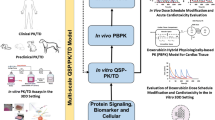Abstract
Carbon tetrachloride (CCl4) lethality in Sprague-Dawley rats is greatly amplified by pretreatment of Kepone (decachlorooctahydro-1,3,2-metheno-2H-cyclobuta[cd]pentalen-2-one). The increase in lethality was attributed to the obstruction of liver regenerative processes. These processes are essential for restoring the liver to its full functional capacity following injury by CCl4. Based on the available mechanistic information on Kepone/CCl4 interaction, a physiologically based pharmacokinetic/pharmacodynamic (PBPK/PD) model was constructed where the following effects of Kepone on CCl4 toxicity are incorporated: (1) inhibition of mitosis; (2) reduction of repair mechanism of hepatocellular injury; (3) suppression of phagocytosis. The PBPK/PD model provided computer simulation consistent with previously published time-course results of hepatotoxicity (i.e., pyknotic, injured and mitotic cells) of CCl4 with or without Kepone. As a further verification of this model, the computer simulations were also consistent with exhalation kinetic data for rats injected with different intraperitoneal (i.p.) doses of CCl4 in our laboratory. Subsequently, the PBPK/PD model, coupled with Monte Carlo simulation, was used to predict lethalities of rats treated with CCl4 alone and CCl4 in combination with Kepone. The experimental lethality studies performed in our laboratories were as follows: Sprague-Dawley rats were given either control diet or diet containing 10 ppm Kepone for 15 days. On day 16, rats in the Kepone treated group were given i.p. doses of 0, 10, 50, and 100 μl/kg CCl4 (n=9) while control rats were exposed to 0, 100, 1000, 3000, and 6000 μl/kg CCl4 (n=9). Lethality was observed at the 1000 (1/9), 3000 (4/9), and 6000 (8/9) μl/kg doses for the control group and at the 50 (4/9) and 100 (8/9) μl/kg for the treated group. Based on Monte Carlo simulation, which was used to run electronically 1000 lethality experiments for each dosing situation, the LD50 estimates for CCl4 toxicity with and without Kepone pretreatment were 47 and 2890 μl/kg, respectively. Monte Carlo simulation coupled with the PBPK/PD model produced lethality rates which were not significantly different from the observed mortality, with the exception of CCl4 at very high doses (e.g., 6000 μl/kg, p=0.014). Deviation at very high doses of the predicted mortality from the observed may be attributed to extrahepatic systemic toxicities of CCl4, or solvent effects on tissues at high concentrations, which were not presently included in the model. Our modeling and experimental results verified the earlier findings of Mehendale (1990) for the 67-fold amplification of CCl4 lethality in the presence of Kepone. However, much of this amplification of CCl4 lethality with Kepone pretreatment was probably due to pharmacokinetic factors, because when target tissue dose (i.e., model estimated amount of CCl4 metabolites) was used to evaluate lethality, this amplification was reduced to 4-fold.
Similar content being viewed by others
Author information
Authors and Affiliations
Additional information
Received: 30 October 1995/Accepted: 30 January 1996
Rights and permissions
About this article
Cite this article
El-Masri, H., Thomas, R., Sabados, G. et al. Physiologically based pharmacokinetic/pharmacodynamic modeling of the toxicologic interaction between carbon tetrachloride and Kepone. Arch Toxicol 70, 704–713 (1996). https://doi.org/10.1007/s002040050331
Issue Date:
DOI: https://doi.org/10.1007/s002040050331




